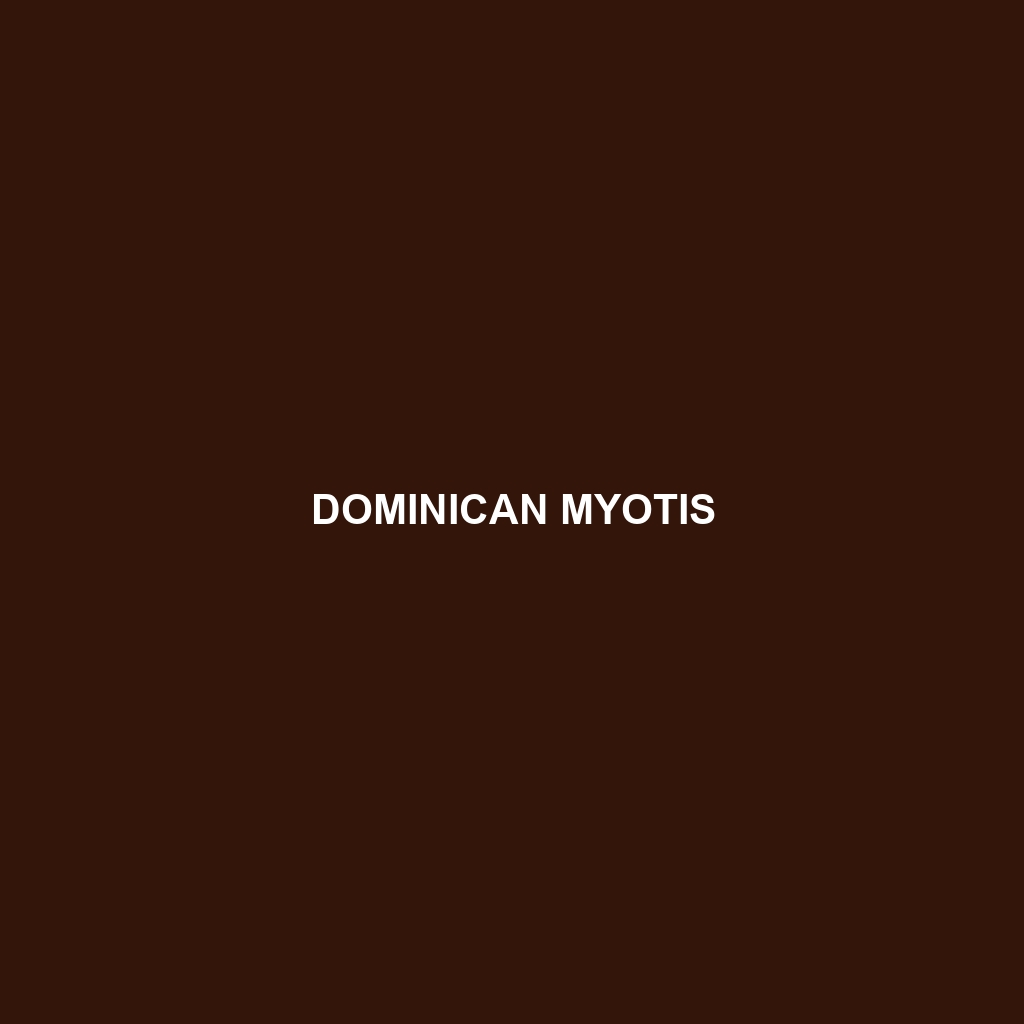Dominican Myotis: A Comprehensive Species Description
Common Name: Dominican Myotis
Scientific Name: Myotis dominicensis
Habitat
The Dominican Myotis is primarily found in the Caribbean, particularly throughout the Greater Antilles. Its preferred habitats include subtropical and tropical forests, edge areas, and urban environments with suitable roosting sites. This species is often located near water bodies, such as rivers and streams, which provide abundant feeding opportunities.
Physical Characteristics
The Dominican Myotis is a medium-sized bat, averaging about 7-10 cm in body length, with a wingspan that can reach up to 30 cm. Its fur is typically a rich brown or gray, with lighter underparts. Notable features include large ears, which aid in echolocation, and a distinctive forearm that measures approximately 3-4 cm. These characteristics help in identifying the species among other members of the Myotis genus.
Behavior
Dominican Myotis bats are nocturnal, emerging at dusk to forage for food. They are known for their agile flight patterns, which enable them to navigate through dense vegetation. Socially, they often roost in small groups, though solitary roosting is also common. During the day, they seek refuge in tree hollows or human-made structures, demonstrating adaptability to urban settings.
Diet
The diet of the Dominican Myotis primarily consists of insects, including moths, beetles, and flies. They employ echolocation to locate their prey, capturing it mid-flight. Their feeding habits contribute to pest control in their ecosystems, making them vital for maintaining ecological balance.
Reproduction
The Dominican Myotis typically breeds in late spring to early summer. Females give birth to a single pup after a gestation period of about 40 days. Maternal care is significant; mothers nurse their young for several weeks post-birth, ensuring the pups are well-developed before they begin to fly and forage independently.
Conservation Status
The conservation status of the Dominican Myotis has been assessed as “Least Concern” by the International Union for Conservation of Nature (IUCN). However, habitat loss due to urbanization and deforestation poses a potential threat to local populations. Continued monitoring is essential to ensure their populations remain stable.
Interesting Facts
One fascinating aspect of the Dominican Myotis is its ability to thrive in both natural and urban environments. Additionally, they play a crucial role in pollination and seed dispersal, further contributing to the health of their ecosystems. This adaptability showcases the species’ resilience in changing environments.
Role in Ecosystem
The Dominican Myotis occupies a vital role in its ecosystem as both a predator and prey. By controlling insect populations, they help reduce crop damage and maintain the balance of local ecosystems. Furthermore, as prey for larger predators, they are integral to the food chain, underscoring their importance in biodiversity.
This HTML-formatted species description offers a comprehensive overview of the Dominican Myotis, integrating relevant keywords and information to enhance search engine optimization.
